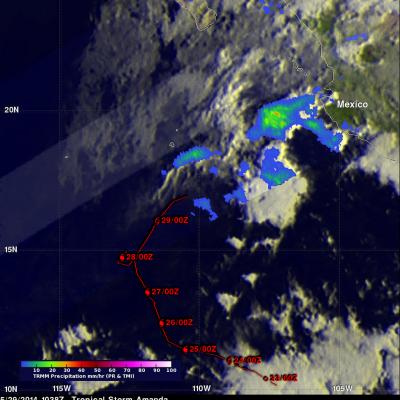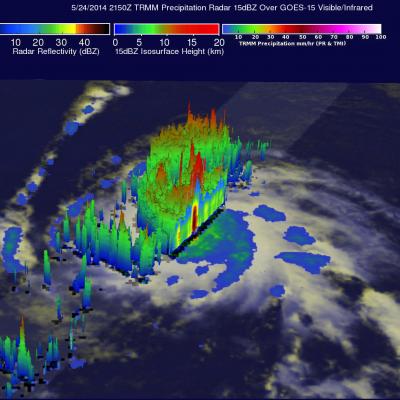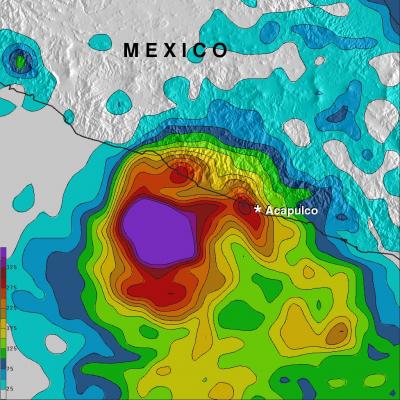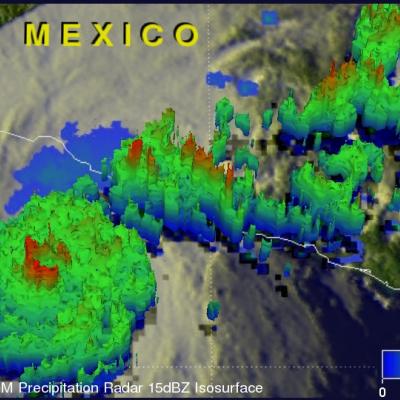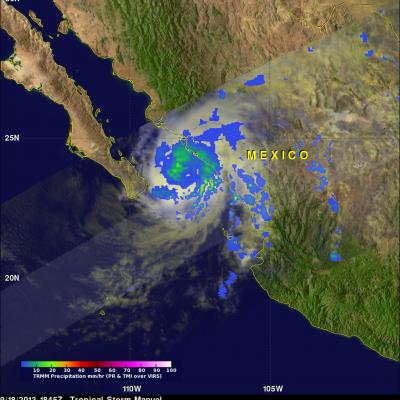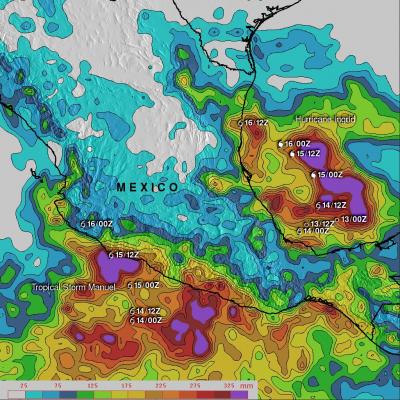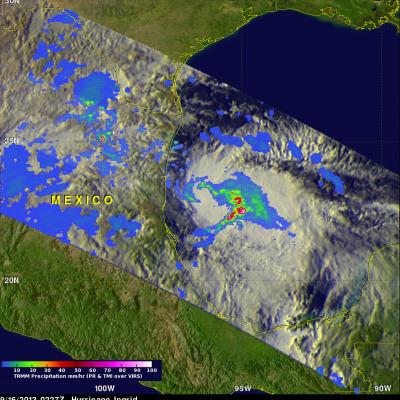Amanda Weakening
Once powerful hurricane Amanda was weakening to tropical depression intensity when the TRMM satellite passed above on May 29, 2014 at 1038 UTC. A rainfall analysis derived from TRMM data is shown overlaid on a GOES-15 enhanced infrared image. TRMM's Microwave Imager (TMI) found rain falling at a rate of slightly over 47 mm/hr (about 1.9 inches) in storms located between Amanda's center and Mexico's coast. Amanda's locations and intensities are shown in red.



